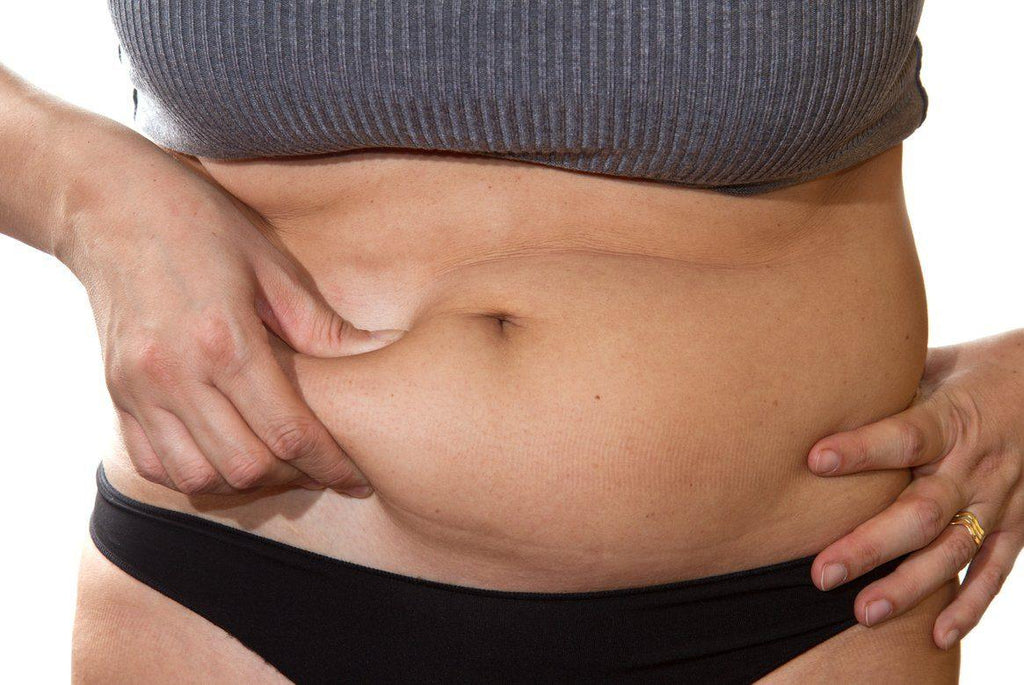Here’s a good one for you.
This morning as I was preparing to write today’s blog, I went online to a site that claims to calculate your ideal bodyweight. I put in my parameters—frame size, height, weight and gender—and guess what.
It came back and said I was one pound OVERWEIGHT.
Me—the person that consistently eats a healthy diet, works out vigorously six days a week, and at age 57 still wears a size two.
And all I could think about was the massive numbers of people that are SO misled by the faulty and downright wrong weight guides that are out there!
Let’s look at the evolution of weight guides and explore what YOUR ideal weight should be!
The history--standardized tables
Back in the early 80's when I worked for a health insurance company, we used standardized tables that showed weight ranges for various heights for men and women.
There were color-coded sections for underweight, normal weight and overweight, and obesity was defined as being 150 percent of your normal bodyweight.
That may have been OK for insurance underwriting purposes, but in reality, there was room for a big swing in each of the weight levels. Someone could fall within the range of "normal weight," but still look like they invented the Dunkin’ Donuts diet.
Current weight guidelines provide a more "specialized" look at a person’s build by first of all redefining overweight and obesity.
Overweight means have excess WEIGHT for your height, whereas obesity refers to an abundance of body FAT.
And the Body Mass Index (BMI) takes a closer, more defined look at someone's specific height and weight as an indicator of whether they just are carrying some excess baggage or are truly obese.
So what's your BMI and what does it mean?
Although there are formulas to manually compute your BMI, here is a handy BMI calculator that accepts both standard and metric measures:
- http://www.nhlbi.nih.gov/health/educational/lose_wt/BMI/bmicalc.htm
Most medical organizations use the following criteria to assess someone’s bodyweight based on their BMI:
- < 18.5 = underweight
- 5 - 24.9 = normal weight
- 0 - 29.9 = overweight
- 30 or more = obese
But even this system is not foolproof because certain people may have a larger percentage of muscle which can drive up their weight (because muscle weighs more than fat) and as a result, they may have a BMI that classifies them as overweight when that’s not truly the case.
I suspect that’s one of the reasons why I was classified as “overweight.” You can’t be a blackbelt for 17 years and a runner for nearly 30 and not build up a good amount of muscle.
Percent Body Fat—a more accurate picture
Now, what can give a far more accurate picture of your build is your Percent Body Fat (the percentage of total body fat compared to body weight) and your Visceral Fat Level (the estimated amount of fat surrounding the internal organs in your abdomen)—aka your belly fat.
Since fat (and not necessarily total weight) is really the true health issue, the Percent Body Fat and Visceral Fat Level will let you know where you stand, while at the same time you won’t be “penalized” for having a good amount of lean muscle mass.
Specialized machines like the InBody can measure PBF and Visceral Fat—you can find this machine in some doctors’ offices or health clubs.
If you can’t locate a machine, you can estimate both measures at home.
Here is a calculating tool for PBF that comes pretty close—just be sure to have a tape measure handy:
Ideal PBF ranges for women and men are:
| Women | Men | ||
| ------------------ | -------------------- | ||
|
Athletes |
14 – 20% |
Athletes |
6 – 13% |
|
Fit |
21 – 24% |
Fit |
14 – 17% |
|
Acceptable |
25 – 31% |
Acceptable |
18 – 24% |
|
Obesity |
> 32% |
Obesity |
> 25% |
Much to my relief, my PBF fell in the “Athletes” range for women!
As far as visceral fat goes, measure your natural waist (where you “crease” when you bend to the side) and your hips (at their fullest point) and divide the waist number by the hip number. Any result greater than 1.0 for a man or .85 for a woman suggests excess visceral fat.
So for example, if you’re a woman and your waist is 27 inches and your hips at their fullest point are 35 inches, your visceral fat ratio is 27/35 or .77, which is in the acceptable range.
BMIs are stable but our waists are still EXPANDING
According to data reported by the CDC, in 1999 the average waistline in the US was 38.8 inches for men and 36.3 inches for women.
Now as of 2016 (when the latest data was collected by the CDC) we’ve expanded to 40.3 inches for men and 38.7 inches for women!
And if you take a look around, it’s clear to see that those numbers haven’t come down in the last four years.
Since BMIs haven’t been going up, then what is happening is that a growing percentage of people are accumulating more visceral (belly) fat than ever before!
And this is not good.
Having excess belly fat can increase your risk of heart disease, high cholesterol, cancer, diabetes and kidney disease, and even increase your risk of dementia!
Win the battle over blubber
Here are some ways you can help win the battle over blubber and attain a healthier body fat percentage.
Have the right diet and sound digestion
Refined carbs are a leading factor behind not only our blossoming blubber but also our ever-increasing rates of Type 2 diabetes, heart disease and cancer!
So the more you can avoid refined foods in general and instead rely on nutritious REAL foods (like fruits in moderation, vegetables, meats, poultry, fish, good fats, eggs, dairy and legumes), the greater your chances of living the rest of your days free of pain, disease and excess fat.
And sound digestion is a MUST! If you are not digesting your foods effectively, you are not getting nourished like you should, which will increase your hunger (and the scale number too).
My Want to Lose Weight? Stop Dieting! program will guide you on how to enjoy delicious, good-for-you foods, and show you how to create meals that are easier for your system to tackle!
When you have a diet of real foods and tip-top digestion, losing excess weight is easy—in many cases, it will practically drop off of you!
Plus you’ll get a recipe book full of delicious creations, including desserts! Eating right doesn’t necessarily mean NEVER enjoying a treat! I’ll show you how to work in an occasional yummy dessert without packing on the pounds.
Move it
There’s no way around it—if you want a chance at a healthy body weight and to minimize your risk of all kinds of diseases, you simply MUST move….more than just from the couch to the refrigerator and back during commercials.
So get your doctor’s OK and get going!
Note that Want to Lose Weight? Stop Dieting! also gives you excellent advice on choosing the exercise activity that is right for you, overcoming negative feelings about exercise, and keeping your motivation high!
And if it’s energy you need, then you might be low in Vitamin B12 (B12 deficiency is a leading cause of low energy).
If that sounds like you, then our Hydroxaden 2.5 B12 spray can help turn that around for you fast!
Get enough Omega-3 essential fatty acids
Studies have shown that people who maintain a rich supply of Omega-3 EFAs have lower blood triglyceride (fat) levels and remain free of cardiovascular disease and other degenerative conditions far longer than those with lower Omega-3 levels.
Since our typical diets are grossly lacking in these important nutrients, supplementing with a quality Omega-3 fish oil like VitalMega-3 can help ensure you have a health-supporting supply of these natural anti-inflammatories.
De-stress
Most people don’t realize this, but chronic stress and overproduction of cortisol can deplete lean muscle and make your body hold on to fat in the belly region. It also enlarges your fat cells, allowing them to store more fat!
Do what you need to do (regular exercise is great) to reduce stress in your life.
Get enough sleep
Proper sleep increases levels of immune system chemicals that help reduce fat-causing inflammation in your body.
The average person requires between seven and nine hours of sleep per night. So if you’re getting fewer than that, it’s time to turn off the TV or computer and get some decent rest.
Congratulations!
You are now an expert in body fat, and have some great strategies to help your body achieve a more healthful level.
To your health,
Sherry Brescia












I believe the PBF charts are incorrect.
I weigh 163lbs. I’m 5’ 11"
My waist is 29" and my BMI is 20% – I put in all my measurements for the PBF and the range came back as: Obesity.
Silly chart.